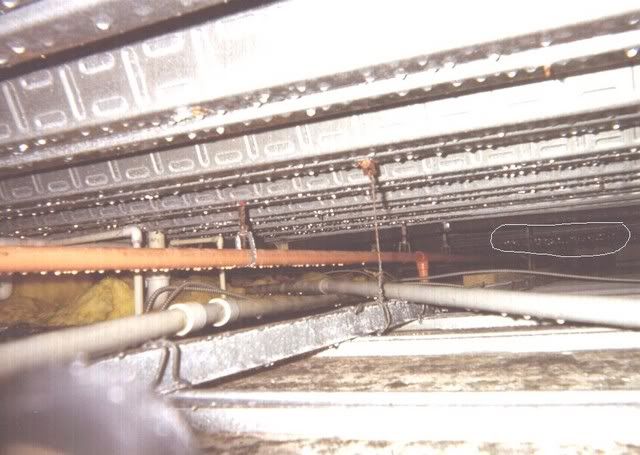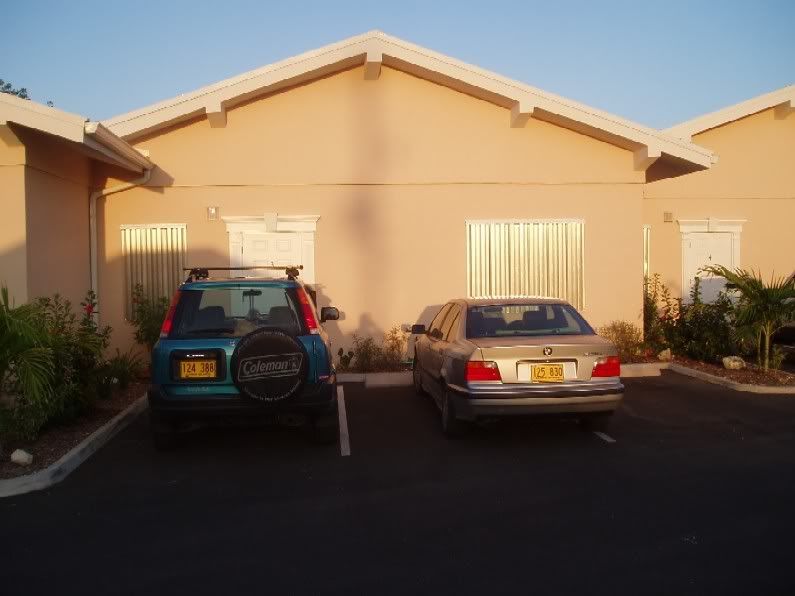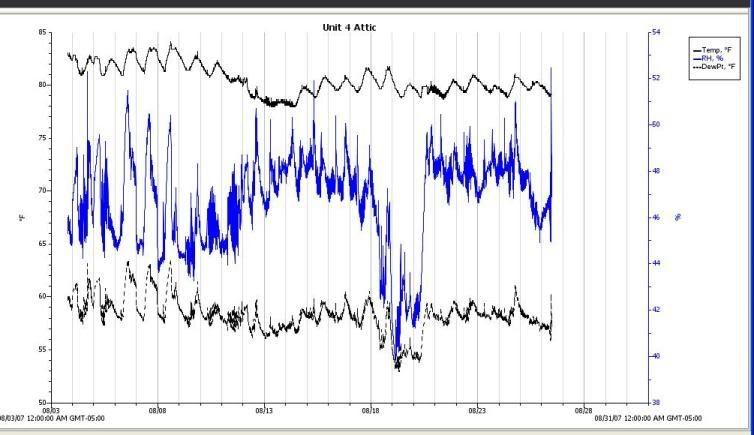Here I am on a small south pacific Island w/out access to Ashrae...what are the best practices for HVAC design here? I see a lot of sweating walls and rusting duct. Whats best: Alum duct, flex duct, sstl, corrosion restiant coatings on equipment. Its 89 deg and 80RH here most of the time.
Navigation
Install the app
How to install the app on iOS
Follow along with the video below to see how to install our site as a web app on your home screen.
Note: This feature may not be available in some browsers.
More options
Style variation
-
Congratulations JAE on being selected by the Eng-Tips community for having the most helpful posts in the forums last week. Way to Go!
You are using an out of date browser. It may not display this or other websites correctly.
You should upgrade or use an alternative browser.
You should upgrade or use an alternative browser.
Island Life 3
- Thread starter Mike48099
- Start date
- Status
- Not open for further replies.
-
3
- #2
AbbyNormal
Mechanical
Mike I am on Caribbean Island.
You have internet so you have ASHRAE access.
Small island means your dewpoints will be very close to the sea surface temperatures. Your condition of 89F at 80% Rh is about an 82 dewpoint, I will get them that high every now and then but more like a consistent 78 to 80 here.
So if the coast is not far away, galvanized fresh air ducts will rot. The thicker the galvanizing, the longer it lasts, but it will fail. Need aluminum or stainless fresh air ducts.
If you run the fresh air duct through conditioned space you need to insulate it so that the air inside the duct does not condensate. The condensation speeds corrosion and there is a good chance that there will be organic matter in the duct- pollen, insects. You do not want wet organic matter at room temperature laying around in ducts.It will be a spore generation factory.
You want to keep your buildings under a positive pressure to keep that humidity out. You bring in fresh air directly to a cooling coil, cool it off and then blow it into the space.
Order "The ASHRAE Guide for Buildings in Hot and Humid Climates" and the ASHRAE "Humidty Control Design Guide"
here is a free chapter from the latter
You live somewhere, where the ambient dewpoint is higher than the temperature people will set their thermostats at so you need to be careful.
Take the "V" out of HVAC and you are left with a HAC(k) job.
You have internet so you have ASHRAE access.
Small island means your dewpoints will be very close to the sea surface temperatures. Your condition of 89F at 80% Rh is about an 82 dewpoint, I will get them that high every now and then but more like a consistent 78 to 80 here.
So if the coast is not far away, galvanized fresh air ducts will rot. The thicker the galvanizing, the longer it lasts, but it will fail. Need aluminum or stainless fresh air ducts.
If you run the fresh air duct through conditioned space you need to insulate it so that the air inside the duct does not condensate. The condensation speeds corrosion and there is a good chance that there will be organic matter in the duct- pollen, insects. You do not want wet organic matter at room temperature laying around in ducts.It will be a spore generation factory.
You want to keep your buildings under a positive pressure to keep that humidity out. You bring in fresh air directly to a cooling coil, cool it off and then blow it into the space.
Order "The ASHRAE Guide for Buildings in Hot and Humid Climates" and the ASHRAE "Humidty Control Design Guide"
here is a free chapter from the latter
You live somewhere, where the ambient dewpoint is higher than the temperature people will set their thermostats at so you need to be careful.
Take the "V" out of HVAC and you are left with a HAC(k) job.
AbbyNormal
Mechanical
Here is a photo I call "But it worked great in Arizona"
It was an Arizona design recycled here-- it was a negative pressure ventilation scheme, as you can see it is disasterous. The decking is the underside of a floor slab, it was 78F, the ceiling space was demonstrating the rain cycle like a primary school lesson. There was over 1/2 inch of water in the sheet metal channels holding up the ceiling

Take the "V" out of HVAC and you are left with a HAC(k) job.
It was an Arizona design recycled here-- it was a negative pressure ventilation scheme, as you can see it is disasterous. The decking is the underside of a floor slab, it was 78F, the ceiling space was demonstrating the rain cycle like a primary school lesson. There was over 1/2 inch of water in the sheet metal channels holding up the ceiling

Take the "V" out of HVAC and you are left with a HAC(k) job.
AbbyNormal
Mechanical
nothing last longer than the trane spine fin all aluminum condensing coils
Take the "V" out of HVAC and you are left with a HAC(k) job.
Take the "V" out of HVAC and you are left with a HAC(k) job.
Mike This may be of some value to you
AbbyNormal
Mechanical
paston effect is good, I would say seal the attics and avoid most of the paston problems. Bailey's article even notes how older houses with out attic ventialtion did fine
Mike will be a lot more humid than Florida though
Take the "V" out of HVAC and you are left with a HAC(k) job.
Mike will be a lot more humid than Florida though
Take the "V" out of HVAC and you are left with a HAC(k) job.
- Thread starter
- #7
Thanks for the feeds, I get about 5min on-line time before the island is cut off again or DoD takes over the system. my architect wants to know where to put the vapor barrior on a cmu/concrete wall system with metal studs/insulation and gyp on the inside...ideas?
AbbyNormal
Mechanical
don't use a vapour barrier at all
never ever on the inside in a hot humid climate
Take the "V" out of HVAC and you are left with a HAC(k) job.
never ever on the inside in a hot humid climate
Take the "V" out of HVAC and you are left with a HAC(k) job.
AbbyNormal
Mechanical
concrete is permeable, water is going to wick through all the time, if it can dry to the room air it is a very insignificant moisture load.
If you place a vapour barrier inside the water will build up and be a real problem
In my experience I would insulate on the outside with styrofoam
If you insualte on the inside between those studs, use something that breathes
For a commercial building, ASHRAE 90.1 would not require those concrete walls to be insulated in your climate the thermal mass cuts down on the heat coming in during the day, it releases the heat at night
If you insulate on the outside, you cut down on the heat that gets into that concrete in the first place.
If you seal the attic and insulate the roof deck and any gable walls, the building will tend to be very dry, and I doubt the attic gets much hotter than 80F.
A white metal roof is a no brainer, keeps the heat out, reflects it away.
Driest condos in the caribbean (hurricane panels up for Hurricane Dean)

sealed unconditioned attic averaged 80.5F and 47% RH in Aug 2007


Take the "V" out of HVAC and you are left with a HAC(k) job.
If you place a vapour barrier inside the water will build up and be a real problem
In my experience I would insulate on the outside with styrofoam
If you insualte on the inside between those studs, use something that breathes
For a commercial building, ASHRAE 90.1 would not require those concrete walls to be insulated in your climate the thermal mass cuts down on the heat coming in during the day, it releases the heat at night
If you insulate on the outside, you cut down on the heat that gets into that concrete in the first place.
If you seal the attic and insulate the roof deck and any gable walls, the building will tend to be very dry, and I doubt the attic gets much hotter than 80F.
A white metal roof is a no brainer, keeps the heat out, reflects it away.
Driest condos in the caribbean (hurricane panels up for Hurricane Dean)

sealed unconditioned attic averaged 80.5F and 47% RH in Aug 2007


Take the "V" out of HVAC and you are left with a HAC(k) job.
AbbyNormal
Mechanical
if anyone cares, the attic temperature peaked after sunset. Basically some thermal mass releasing heat and ceiling mounted lights were turned on. Attic insualted at roof deck tends to trap heat
The roof is about R7, I figure it is more effective then R30 at the ceiling plane with a vented attic.
The way we build has a far greater impact on our comfort, energy consumption and IAQ, than any HVAC system we install
The roof is about R7, I figure it is more effective then R30 at the ceiling plane with a vented attic.
The way we build has a far greater impact on our comfort, energy consumption and IAQ, than any HVAC system we install
- Status
- Not open for further replies.
Similar threads
- Replies
- 5
- Views
- 383
- Replies
- 0
- Views
- 252
- Replies
- 5
- Views
- 783
- Replies
- 2
- Views
- 190
